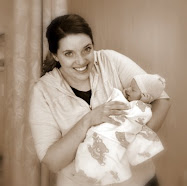Delayed Cord Clamping
by
Do you know what delayed cord clamping is? I remember first coming across this information in anatural childbirth book my midwives had loaned to me, and I was struck at how barbaric it is not to delay umbilical cord clamping. In a typical hospital birth, the baby’s umbilical cord is clamped immediately after it has left the birth canal. Yet, if you observe the umbilical cord, it is still pulsing and delivering oxygen rich blood to the baby, even though the newborn has taken its first breath.
Why did doctors begin early cord clamping? According to Empowered Childbirth, it was to prevent anesthesia from “heavily medicated births” from entering the newborn’s bloodstream. Empowered Childbirth goes on to explain:
When a human baby is born it needs to begin breathing air into its lungs in order to survive. However, it would be a mistake to imagine that a baby’s first breath contains their body’s first experience of life-giving oxygen. Oxygen is provided for the fetus throughout the entire pregnancy by the mother, through the placenta. Following birth the placenta continues to provide oxygen for approximately 5 minutes while blood pumps, to and fro, through the umbilical cord. This is part of an ingenious plan of God’s (or nature’s) to allow the newborn time to “unfold” his/her lungs and to gently make the switch from living underwater to breathing air through the lungs. Remember, the infant is not receiving “placental” blood or even the mother’s blood through the umbilical cord. The baby is retrieving its own blood supply from one of its own functioning organs that just happens to be inside its mother’s body.
With both of my children, we delayed tying off and cutting the umbilical cord for well over 15 minutes. In fact, not delaying cord clamping can cause a host of injuries to infants, including:
newborn anemia, respiratory distress leading to brain damage and/or death (rare, yes, but it happens), inadequate blood supply resulting in a need for transfusion, possible heart defects resulting from problems closing off the hole in the heart valves following birth. There are a few doctors now theorizing that the rise in autism is due to brain damage caused by early cord clamping.
Judith Mercer, CNM, further explains problems related to blood flow from early cord clamping:
Early clamping of the umbilical cord at birth, a practice developed without adequate evidence, causes neonatal blood volume to vary 25% to 40%. Such a massive change occurs at no other time in one’s life without serious consequences, even death. Early cord clamping may impede a successful transition and contribute to hypovolemic and hypoxic damage in vulnerable newborns.
No matter where you deliver you baby or with a midwife or doctor, you can advocate for delayed cord clamping. It’s not just doctors, but many midwives also clamp early, so don’t assume your midwife will not clamp right away. Moving from the womb to the outside world is change enough for the baby without having your lifeline severed before it has stopped pulsing. Delaying cord clamping or tying is advice I think every pregnant woman should receive.



No comments:
Post a Comment